¿Buscas una forma más limpia de disfrutar de tus hierbas favoritas? vaporizadores de hierbas secas son una alternativa popular a fumar y han arrasado en el mundo de las hierbas. Las investigaciones confirman que los vaporizadores reducen significativamente los subproductos nocivos y ofrecen una experiencia más limpia y sabrosa.
Si eres nuevo en el vapeo, esta guía cubre toda la tecnología, los pros, los contras y los tipos de vaporizadores de hierbas secas. Al final, podrás encontrar tu pareja perfecta. Si no es así, siempre puede contáctenos para obtener más información. ¡Estaremos encantados de ayudarle!
¿Qué son los vaporizadores de hierbas secas?
Los vaporizadores de hierbas secas son dispositivos diseñados para calentar hierbas molidas sin quemarlas. A diferencia de fumar, donde las hierbas se queman y liberan humo, los vaporizadores utilizan un control preciso de la temperatura para calentar las hierbas hasta que sus compuestos activos se liberan en vapor.
Este método ofrece un mejor sabor y más control sobre tus sesiones.
Nuestra experiencia con el vapeo de hierbas secas
Los clientes a menudo nos dicen que el sabor más limpio es lo que los engancha primero: el sabor es más matizado y no hay nada de esa quemadura áspera que se obtiene con la combustión. Muchos también comparten que se sienten físicamente mejor: menos tos, sin sensación de pesadez en el pecho y una experiencia más suave y agradable en general.
Muchos de nuestros clientes realmente disfrutan del proceso de investigación en sí, leyendo reseñas, comparando características y encontrando el ajuste perfecto para su estilo. Es por eso que nuestro mayor consejo es: tómese su tiempo, experimente y vea qué funciona para usted. Hay todo un mundo de vaporizadores por ahí, y la mitad de la diversión es descubrirlo.
Diferentes métodos de calentamiento de vaporizadores de hierbas secas: conducción, convección e híbrido
Hay tres métodos principales de calentamiento de los vaporizadores de hierbas secas: conducción, convección e híbrido, y cada uno afecta el sabor, la eficiencia y la experiencia general a su manera.

Vaporizadores de conducción
Los vaporizadores de conducción calientan las hierbas colocándolas en contacto directo con una superficie caliente, como un horno de metal o cerámica. Este estilo es conocido por su rápido tiempo de calentamiento y su diseño sencillo, lo que lo hace popular entre los principiantes y aquellos que desean una sesión rápida.
Los vaporizadores de conducción tienden a producir vapor denso y constante, pero el riesgo de calentamiento desigual o "puntos calientes" es ligeramente mayor. Revolver el tazón entre caladas generalmente resuelve eso.
Vaporizadores de convección
Los vaporizadores de convección funcionan más como un horno: en lugar de calentar las hierbas directamente, empujan aire caliente a través del material, extrayendo cannabinoides y terpenos sin combustión.
Este método proporciona un vapor excepcionalmente limpio y sabroso y utiliza la hierba de manera más eficiente.
Los vaporizadores de convección suelen ser la elección de los entusiastas que desean el máximo sabor y control, pero pueden tardar más en calentarse y suelen ser más caros.
Vaporizadores híbridos
Los vaporizadores híbridos combinan ambos métodos, utilizando la conducción para calentar la cámara de hierba y la convección para hacer circular el aire caliente. Esta configuración le brinda lo mejor de ambos mundos: producción de vapor rápida y confiable y gran sabor, lo que hace que los dispositivos híbridos sean algunos de los más versátiles del mercado.
En resumen:
- Conducción = sesiones más rápidas, vapor más denso, diseño más simple.
- Convección = calentamiento más lento, sabor más rico, extracción más uniforme.
- Híbrido = rendimiento, eficiencia y conveniencia equilibrados.
La elección de un estilo de calefacción depende de sus preferencias. Si buscas sabor y eficiencia, vale la pena invertir en dispositivos de convección o híbridos. Si la simplicidad y la velocidad son su prioridad, los vaporizadores de conducción pueden ser la mejor opción.
Por qué mucha gente prefiere los vaporizadores de hierbas secas a fumar
Cambiar de fumar a vaporizar hierbas secas es una decisión de la que muchas personas no se arrepienten. Eso es porque es más limpio que fumar, así como más discreto.

Según los CDC, fumar introduce más de 7,000 sustancias químicas en los pulmones, incluidos alquitrán, benceno y monóxido de carbono. Eso también sucede cuando fumas Hierbas. Vapear Hierbas en lugar de fumar puede reducir las toxinas dañinas. Una investigación de 2001 muestra vapear proporciona cannabinoides al tiempo que reduce los productos químicos relacionados con el humo.
Sabor que realmente sabe a la planta
Pregúntele a cualquier fanático de los vaporizadores qué es lo que más le gusta, y el sabor casi siempre es lo primero de la lista. Los vaporizadores conservan los terpenos y los delicados compuestos aromáticos (como los cítricos, el pino o los matices terrosos) que destruye, haciendo que cada sesión sepa a olor a hierba: fresca y vibrante.
3 Tipos de vaporizadores de hierbas secas
Los vaporizadores de hierbas secas vienen en diferentes formas y tamaños, cada uno con sus propias fortalezas. Estos son los principales tipos:
- Vaporizadores portátiles
- Vaporizadores de sobremesa
- Vaporizadores estilo bolígrafo
Vaporizadores portátiles
Los vaporizadores portátiles de hierbas secas son dispositivos compactos que funcionan con baterías diseñados para mayor comodidad. A diferencia de los vaporizadores de escritorio que necesitan ser enchufados, los vaporizadores portátiles te permiten disfrutar de tus hierbas en cualquier lugar: en casa, en la naturaleza o mientras viajas.
Son lo suficientemente pequeños como para caber en su bolsillo o bolso, y la mayoría de los modelos se calientan rápidamente, ofreciendo una experiencia discreta y sobre la marcha sin sacrificar la calidad.
Cómo funcionan
Los vaporizadores portátiles utilizan conducción, convección o calentamiento híbrido para extraer cannabinoides y terpenos de la hierba. Simplemente cargue una cámara pequeña, encienda el dispositivo e inhale vapor a través de una boquilla. La duración de la batería y la velocidad de calentamiento varían según el modelo, pero la mayoría de los vaporizadores portátiles pueden ofrecer múltiples sesiones con una sola carga.
Modelos populares
- Mighty+ (Storz & Bickel) – Una potencia en la categoría portátil, conocida por su calefacción híbrida, batería de larga duración y increíble calidad de vapor.
- PAX Plus : elegante, de bolsillo y fácil de usar, que ofrece un diseño minimalista y controles simples.
- Arizer Solo II – Cuenta con calentamiento dominante por convección, una ruta de vapor de vidrio para un sabor puro y una impresionante duración de la batería.
- DaVinci IQC : un dispositivo elegante e inteligente con control de temperatura de precisión y baterías reemplazables.
Pros
- Compacto y discreto, perfecto para viajes y uso al aire libre
- Tiempos de calentamiento rápidos para sesiones espontáneas
- Amplia gama de precios, desde económicos hasta premium
- Muchos modelos ofrecen un control preciso de la temperatura
- No es necesario tomar una toma de corriente durante el uso
Contras
- Duración limitada de la batería; requiere carga regular
- Tamaños de cámara más pequeños en comparación con los vaporizadores de escritorio
- La calidad del vapor puede ser ligeramente inferior a la de los modelos de escritorio de gama alta
- Se requiere una limpieza frecuente para mantener el rendimiento
Vaporizadores de sobremesa
Los vaporizadores de sobremesa están diseñados para los entusiastas del vapor que valoran el rendimiento de primer nivel, el control preciso y la calidad excepcional del vapor. A diferencia de los modelos portátiles, estos dispositivos deben enchufarse a una toma de corriente, lo que les permite brindar calor constante, tazones más grandes y sesiones prolongadas.
Son ideales para uso en casa, sesiones grupales o cualquier persona que quiera una experiencia de vapeo premium.

Cómo funcionan
Los vaporizadores de escritorio utilizan calentamiento por convección o híbrido para extraer uniformemente los cannabinoides y terpenos de la hierba. Por lo general, vienen con tubos estilo látigo o bolsas de globos para inhalación, y algunos modelos cuentan con pantallas digitales y controles de temperatura avanzados para una experiencia altamente personalizable.
Modelos populares
- Volcano Híbrido (Storz & Bickel) – El estándar de oro de los vaporizadores de sobremesa, que ofrece opciones de globo y látigo, controles de precisión y una calidad de vapor inigualable.
- Arizer Extreme Q : una alternativa más asequible que aún ofrece calentamiento por convección, controles digitales y múltiples opciones de inhalación.
- Plenty (Storz & Bickel) – Un dispositivo de escritorio portátil que combina la portabilidad con la potencia de una unidad enchufable.
Pros
- Calidad y sabor de vapor inigualables
- Control preciso de la temperatura para una extracción óptima
- Cuencos grandes, ideales para compartir o sesiones más largas
- Sin limitaciones de batería: energía ilimitada
- Muy duradero y duradero
Contras
- No portátil; Requiere una toma de corriente
- Más grande y voluminoso que otros dispositivos
- Mayor costo inicial en comparación con la mayoría de los portátiles
- No es tan discreto como los dispositivos más pequeños
Vaporizadores estilo bolígrafo
Los vaporizadores estilo bolígrafo son dispositivos ultracompactos que se asemejan a los cigarrillos electrónicos o a los bolígrafos para vapear. Están diseñados para ofrecer la máxima portabilidad y discreción, lo que los hace ideales para aquellos que desean una opción sigilosa para golpes rápidos sobre la marcha.
Cómo funcionan
A diferencia de los vaporizadores concentrados, los vaporizadores de hierbas secas calientan el material vegetal real en una cámara pequeña. La mayoría usa calentamiento por conducción, lo que mantiene el diseño simple y asequible, aunque puede limitar la calidad del vapor en comparación con dispositivos más grandes.
Modelos populares
- PAX Mini – Un dispositivo pequeño pero potente para aquellos que priorizan la simplicidad y la portabilidad.
- G Pen Dash – Un vaporizador económico estilo bolígrafo con una construcción robusta y buena calidad de vapor para su tamaño.
- Dynavap VapCap – Un vaporizador único, calentado con soplete, amado por su simplicidad y durabilidad.
- Flowermate Aura – Ligero y fácil de usar, que ofrece un buen rendimiento a un precio bajo.
Pros
- Extremadamente pequeño, discreto y fácil de llevar
- Ligero y fácil de usar
- Asequible en comparación con los vaporizadores más grandes
- Perfecto para microdosis o sesiones rápidas en solitario
Contras
- Cámara más pequeña y menos duración de la batería
- El calentamiento por conducción puede conducir a una extracción desigual
- Menor calidad de vapor que los modelos portátiles o de escritorio
- Se necesita una limpieza frecuente debido a su diseño compacto
Tabla de comparación rápida de vaporizadores de hierbas secas
|
Característica |
Vaporizadores portátiles |
Vaporizadores de Sobremesa |
Vaporizadores estilo bolígrafo |
|
Mejor para |
Usuarios cotidianos, viajes, uso versátil |
Usuarios domésticos, conocedores, sesiones grupales |
Principiantes, usuarios ocasionales, máximo sigilo |
|
Fuente de alimentación |
Batería recargable |
Enchufable (potencia ilimitada) |
Batería recargable o linterna |
|
Estilo de calefacción |
Conducción / Convección / Híbrido |
Convección / Híbrido |
Principalmente conducción |
|
Calidad del vapor |
Bien |
Excepcional |
Moderado |
|
Tamaño de la cámara |
Medio |
Grande |
Pequeño |
|
Portabilidad |
Altamente portátil |
No portátil |
Ultraportátil |
|
Rango de precios |
Medio a alto |
Alto |
Bajo a medio |
|
Facilidad de uso |
Fácil |
Moderado (más ajustes, configuración) |
Muy fácil |
|
Discreción |
Medio |
Bajo |
Alto |
|
Mantenimiento |
Medio |
Bajo (duradero, limpieza menos frecuente) |
Alto (se necesita limpieza frecuente) |
Cómo usar vaporizadores de hierbas secas
Usar un vaporizador de hierbas secas es simple, pero algunos pasos clave aseguran que obtengas el mejor sabor, eficiencia y experiencia general:
- Muele tu hierba: Usa un Grinder medio-fino para obtener una consistencia uniforme. Esto maximiza la superficie y garantiza un calentamiento uniforme. Evite moler demasiado fino, ya que puede bloquear el flujo de aire.
- Carga la cámara: Llena suavemente la cámara de hierbas del vaporizador sin apretarlo demasiado. La mayoría de los dispositivos necesitan una compresa suelta y esponjosa para permitir un flujo de aire adecuado.
- Ajusta tu temperatura: Comienza con una temperatura más baja para el sabor y los terpenos (alrededor de 160-180 ° C / 320-356 ° F). Aumente gradualmente si desea un vapor más espeso o efectos más fuertes.
- Calentar: Enciende tu vaporizador y espera hasta que alcance la temperatura establecida. La mayoría de los dispositivos modernos tienen indicadores o vibraciones para informarle que están listos.
- Inhala lentamente: Toma caladas lentas y constantes en lugar de bocanadas rápidas. Esto permite que el vapor se extraiga completamente y reduce el desperdicio.
- Disfruta de múltiples sesiones: Dependiendo del dispositivo y la temperatura, puedes obtener múltiples caladas de la misma cámara. Revolver la hierba a la mitad de la sesión ayuda a garantizar una extracción uniforme.

Cómo limpiar los vaporizadores de hierbas secas
La limpieza regular mantiene tu vaporizador funcionando al máximo, asegura un flujo de aire suave y conserva el sabor. Los pasos dependen ligeramente de tu dispositivo, pero estos consejos funcionan para la mayoría:
- Vacíe la cámara: Retire cualquier hierba sobrante y sacuda las partículas sueltas.
- Residuos del cepillo: Use un cepillo de limpieza pequeño (a menudo incluido) para barrer el material sobrante. Concéntrese en la cámara, la boquilla y la ruta de vapor.
- Remoje las piezas extraíbles: Las boquillas y las pantallas a menudo se pueden remojar en alcohol isopropílico durante 20 a 30 minutos para disolver los residuos pegajosos. Enjuague bien con agua tibia y deje secar por completo.
- Limpie la ruta del vapor: Para la acumulación persistente, use limpiapipas o hisopos de algodón humedecidos en alcohol. Evite sumergir la unidad electrónica principal.
- Vuelva a montar y pruebe: Asegúrese de que todas las piezas estén secas antes de volver a montar el dispositivo. Una prueba rápida sin hierba puede ayudar a garantizar que todo funcione correctamente.
Consejo: Limpia tu vaporizador después de cada 5-10 sesiones para unidades portátiles o de tipo bolígrafo, y después de 10-15 sesiones para los modelos de escritorio. Esto mantiene el sabor puro y evita la obstrucción o el sobrecalentamiento.
En conclusión
Vaporizadores portátiles, bolígrafos de bolsillo o gigantes de escritorio: elige tu vaporizador de hierbas secas favorito y haz tuya cada sesión. Al usar su dispositivo correctamente, mantenerlo limpio y experimentar con diferentes temperaturas y estilos, la vaporización transforma significativamente la forma en que disfruta de sus hierbas.













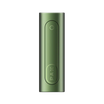
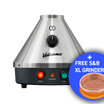
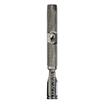
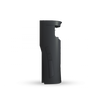
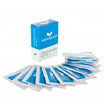
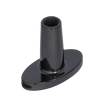
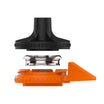
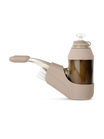
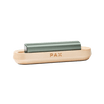

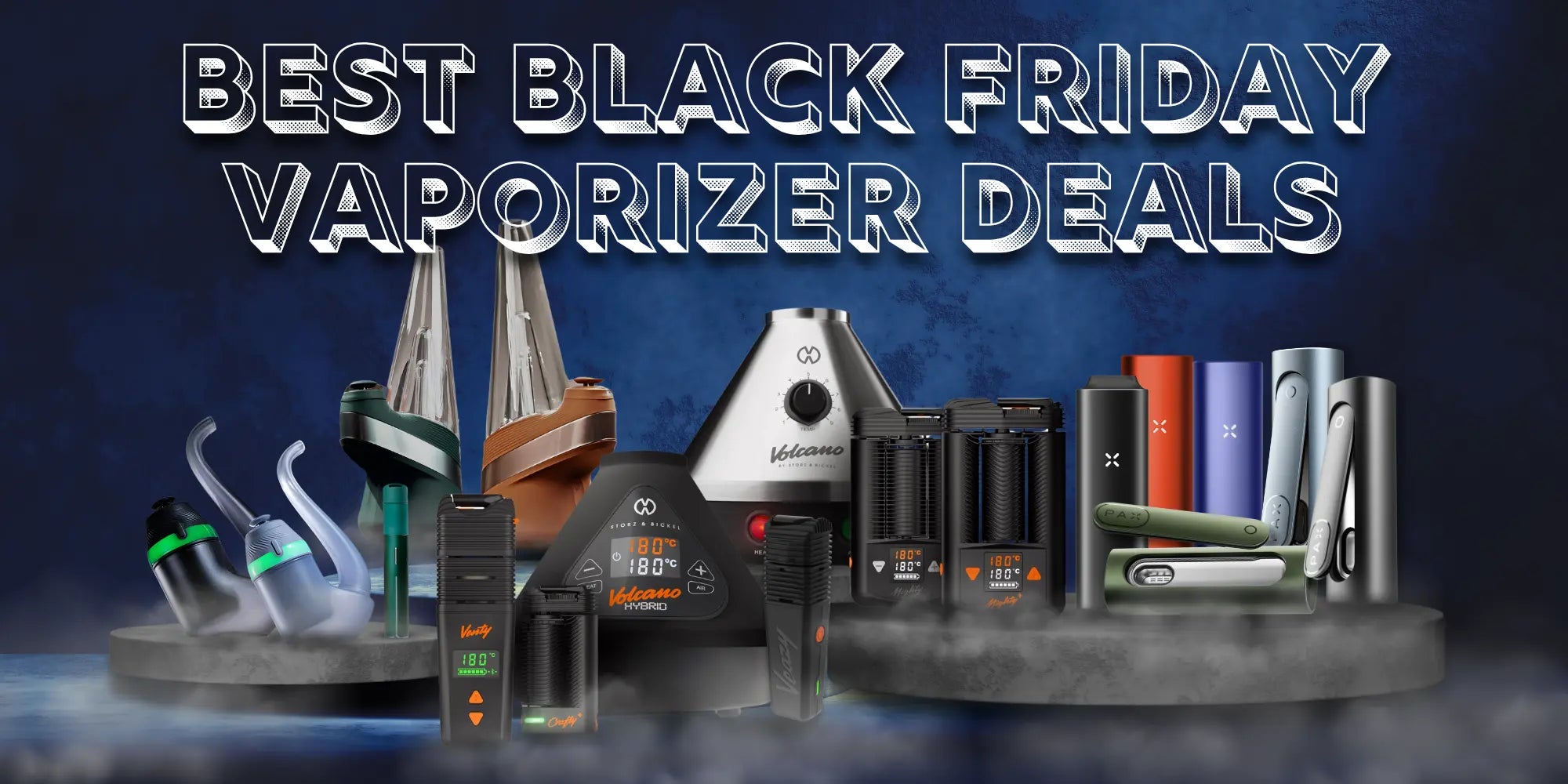

Dejar un comentario
Este sitio está protegido por hCaptcha y se aplican la Política de privacidad de hCaptcha y los Términos del servicio.